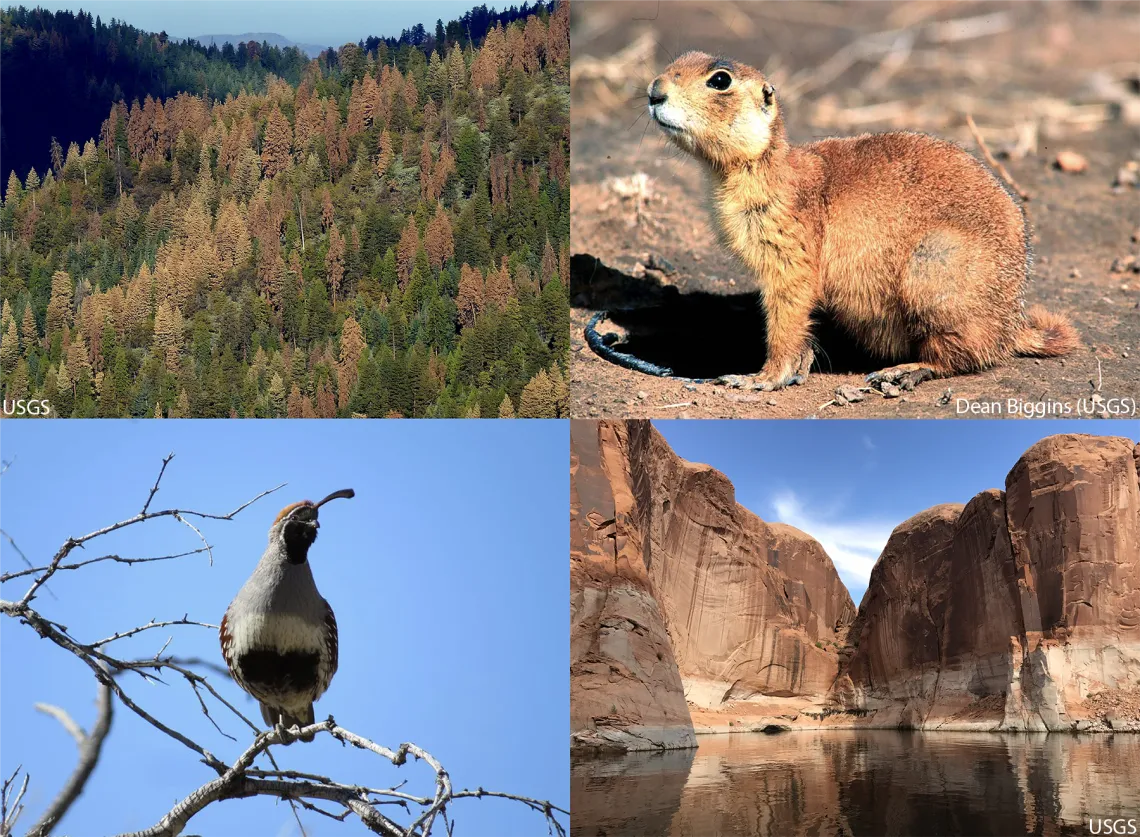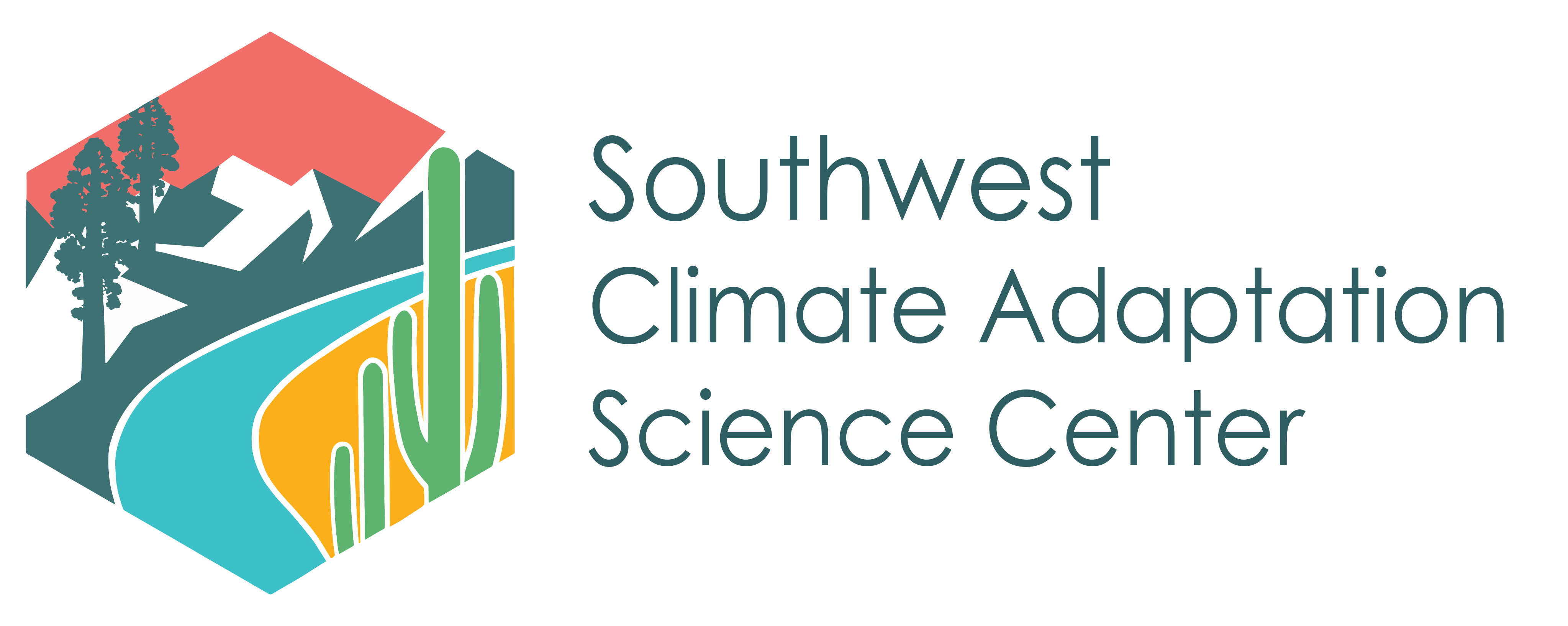Climate-related Needs of State Game and Fish Managers

Ever wonder what’s on the mind of natural resource managers, as they take on the challenges of climate variations and long-term climate shifts? Ever wonder how they’re using climate-related science products, or want to know the spatial scales that are important for their work? We at the SW CASC regularly ask these questions and many more as we aim to develop climate-related scientific insights, information and products that address the needs of natural resource managers. To inform the SW CASC’s second phase of operations (2018-2023), Dr. Arin Haverland and I conducted an assessment of the climate science needs and training and communications preferences of state game, fish, and wildlife agencies in Arizona, California, Nevada and Utah. We were assisted by Dr. Kristin VanderMolen of the Desert Research Institute (Reno, NV), and Sarah Randall, a University of Arizona graduate researcher. This work was part of a broader effort to update SW CASC understanding of emerging regional science needs, and to understand the opportunities and barriers to partnership with the SW CASC.
What we did. Arin led background research, to learn about state agency misions, wildlife action plans (known as “SWAPs”), and key contacts. She also designed questions used in implementing interviews, surveys and discussions with state game, fish and wildlife personnel. During the spring and summer of 2018, Arin and I visited the Arizona Game & Fish Department, the Utah Division of Wildlife Resources, Nevada Department of Wildlife, and three California agencies—CA Department of Fish and Wildlife, CA Natural Resources Agency, and CA Ocean Protection Council. Our visits with each agency typically lasted between two and four hours.
After first swapping brief state agency and SW CASC presentations to orient each other to our missions and capabilities, Arin posed the discussion questions to our state agency partners, such as, “In what ways are you currently using climate-related science products or analyses?” Or, “Do you have forthcoming plan updates which may benefit from applied climate science analyses to address particular issues, assess knowledge gaps, or investigate vulnerabilities and adaptation opportunities?” I followed up with some prompts about recent climate research, forecasts, or model data and projections, so that, together, we could home in on scientific research and information to address specific timescales and geographic areas.
The discussions that followed, while brief, were rich and they provided us with a wealth of information. As researchers, we got a glimpse of the important work done by state game, fish and wildlife agencies, and some insights into the pressures and constraints that agencies face. For a “climate guy,” conversations about the role that climate and weather variations play, in the complex and sensitive decisions that managers face as they aim to balance constraints in funding, the perspectives of state game commissioners, sportsmen’s groups and conservationists’, and the challenges of drought and wildland fire, were exciting and eye-opening!
In all, we conducted 6 structured listening sessions and 24 interviews, and we received 88 web-based survey responses. We put this into a database and analyzed and synthesized points made by the various agencies, while keeping in mind how the research and information needs fit with the SW CASC’s mission.
What did we learn? In 2018, following another winter with dismal snowpack and spring and summer seasons in which wildfires were scorching major parts of the states that we visited, it wasn’t surprising to hear that intense and stand-replacing fires were front and center in the concerns of our state agency partners. They mentioned that they wanted more and better information and forecasts of intense fires, drought-related tree mortality, and vegetation responses to the combination of mortality and fire. In particular, they were interested in the development of fire models that could be used by game and fish managers to look at scenarios that included the intersections of multiple factors, such as stand-replacing fire, the use of prescribed fire, the frequency of intense fire and so on.
Given evident changes in the timing of snowmelt, and the loss of snowpack due to increasing temperatures, as well as sublimation of snowpack during multi-day heat events, our state colleagues wanted more information on how their agencies could integrate information about temperature-driven changes to snowpack (referred to as “warm snow drought”) into their analyses, in order to better manage the health and wellness of species, especially big game species (e.g., deer, elk, pronghorn) whose populations are dependent on snow-fed water sources. These species are critical for sustaining sport hunting recreation.
Also, our colleagues, aware of increasing temperatures and the regional climate model projections for increasing future temperatures, articulated needs for science and predictions to help them better anticipate the spread of wildlife and vegetation diseases, and the spread of invasive grassland and aquatic species that threaten the health of species important to recreation and key threatened and endangered species.
A theme that crossed all of our conversations was the complex challenges posed by climate, our topic du jour, but also the many other factors that put stress on fish and wildlife, such as invasive species, and transportation, industry and housing development that can often affect species habitat and species’ ability to migrate across the landscape. These kinds of complex, intersecting issues are ubiquitous, and they are the focus of the scenario planning and robust decision-making initiatives of federal agencies, think tanks, non-governmental conservation organizations, and academia (e.g., Rand Corporation, National Park Service, SW CASC).
We also learned much about the communication preferences and needs of state agencies. Two key needs are (a) syntheses and assessments of climate and climate-related impacts to habitat at the sub-regional and watershed scales at which managers operate, and (b) examples of successful implementation of strategies to address climate variations and anticipated temperature and precipitation trends.
What kinds of guidance did we receive for how to improve the way the SW CASC works to address the needs of state game, fish and wildlife agencies? Probably the most important challenge to working effectively with state agencies is the lack of fit between the regional or national spatial scale of most climate science research and the time and geographic scales at which our state colleagues manage species and make decisions. We think this can be overcome by working closely with liaisons between state agencies and partner universities, such as in Utah and Arizona, and by tailoring parts of the funding opportunities put forth by the SW CASC so they are open to addressing sub-regional and watershed scales.
An important opportunity for the SW CASC to partner with state agencies is through in-person meetings, which are strongly preferred by state agency personnel. While there are scant resources for convening the number of in-person meetings needed to address the many needs we learned about, we think it is important for the SW CASC to put more effort into reaching out to state agencies when SW CASC consortium members convene meetings with implications for fish and wildlife, and making the most of planned state-specific and regional climate adaptation forums.
Moving forward. We conducted an initial webinar on the results of the state game, fish, and wildlife needs assessment, and we will soon release a report. Also, through efforts by USGS and US Fish & Wildlife colleagues, on behalf of the SW CASC, we expect to have further reports on the needs of federal agency game, fish, and wildlife managers—perhaps as early as the autumn of 2019. Together the state and federal agency manager assessments, along with prior climate adaptation assessments of tribal managers, will provide SW CASC with a nucleus of ideas to inform and update our strategic science agenda.

